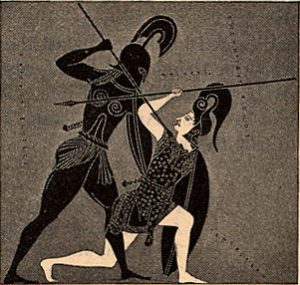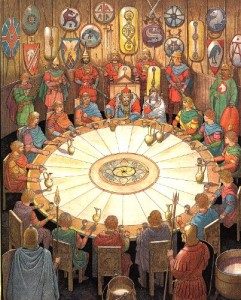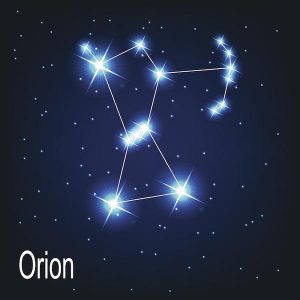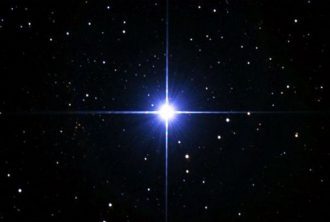 The Homeric Catalogue of Ships has been a puzzle for studying the Iliad since antiquity. The catalogue lists those who took part in the siege of Troy and where they came from.
The Homeric Catalogue of Ships has been a puzzle for studying the Iliad since antiquity. The catalogue lists those who took part in the siege of Troy and where they came from.
The catalogue appears to be slapped into Book II with no plain reason and while Homer wrote it, it was not his best bit. Some early editions of the Iliad drop the Catalogue of Ships completely, others leave it in a box by itself.
Cynics have said that the list was just a crowd-pleasing list of places. A bit like a rock star screaming “It’s great to be back in Scunthorpe again” so that the poet’s audience may see their region mentioned in the poem. In fact, it was believed that at Athens was inserted into the catalogue in antiquity during the rulership of Solon.
All that though was Edna Leigh came up with a spectacular theory which turned the whole poem on its head. She argued that the poem drew astronomical information with the heroes being stars or constellations. Her work was published in Homer’s Secret Iliad published after her death by Florence and Kenneth Wood and makes for a compelling if incomplete argument. Leigh’s theory explains some of the stranger aspects of the poem by fitting them into astrological explanations.
The Catalogue of Ships are each of the constellations and the heroes mentioned are the stars. Achilles is Sirius leading the constellation of Canis Major, who chases Hector, as Orion across the sky before killing him. (The theory is detailed and you should really read the book as there is much more to it.) Leigh could find astrological events which fitted the poem and use it to calculate the correct dates for the equinoxes and solstices, the changes in the pole star, and the disappearance of Sirius for a time below the horizon. It is one of those things that once you have read it, you can’t get the concept out of your mind.
However, there are some problems with the theory. While I think, it is completely accurate, it misses because it motivations are entirely modern. It is based on the idea that a poet took two thousand years of astrological data and made them into a magic poem to help him remember, this data was later written down.
But a modern scientific approach ignores the historical and cultural context. If the data covers such a long period of oral history then this becomes crucial. While Edna Leigh might not think that the stars were actual heroes and the planets were gods, then Homer certainly did. It might be that Homer’s Illiad was a muse inspired version of magical data collected by watching the night’s sky, but that was only part of it.
Magical tradition makes it very important to contact Zodiacal forces and what Homer would have done is created a system of star magic to do it. The concept that Gods and men became stars is a very important part of human thought. In fact,in some esoteric circles it is still consisted a starter. The idea being that when a soul has learnt all it can from the Solar Logos it evolves to become a logos of its own solar system.
Later magic placed Angels or gods at the centre of these constellations, but, if Leigh is correct, Homer placed Ancient Heroes, or the souls of dead ancestors at the centre of his. The night’s sky then was a cinema telling a fragment of one great story.
To re-create this system of magic we need to rethink our twee concept of ancestors as being those of our dead grandparents, but something deeper and more powerful. Homer places every tribe of humanity into 45 constellations, each ruled by a heroic ancestor. If these were the 45 original tribes of the Indo-European people as they migrated across the planet, or something even bigger, such as the division of all humans into 45 constellations, is a subject for experimentation.
 But it would suggest that the 12 signs of the zodiac are 12 heroes who are important by they are on the ecliptic. A way of seeing them would be the rulers of humanity. That is not underplaying the others’ importance, but gives a starting point to fusing this concept with more modern magic. What sticks in my mind is that these energies are like those of the Arthurian Knights so this is a Homeric Round Table.
But it would suggest that the 12 signs of the zodiac are 12 heroes who are important by they are on the ecliptic. A way of seeing them would be the rulers of humanity. That is not underplaying the others’ importance, but gives a starting point to fusing this concept with more modern magic. What sticks in my mind is that these energies are like those of the Arthurian Knights so this is a Homeric Round Table.
Here is the list of the 12 heroes of the constellations.
Leo Agamemnon
Scorpio: Menelaus
Libra: Helen*
Cancer: Diores
Aries: Thoas
Taurus: Idomeneus
Pisces: Tlepolemus
Virgo: Aeneas
Sagittarius: Pandarus
Aquarius: Euphemus
Gemini: Glasucus
*Helen was not mentioned in the Catalogue of ships and neither was Libra. Although the constellation was known at the time of Homer it was considered part of the claws of Scorpio (there were 11 signs of the Zodiac). Leigh provides a detailed reasoning for Helen and her ladies in waiting to be part of Libra.
The catalogue of ships mentions several names as leaders. But the true leader is always the one associated with the brightest star. Four of the names are Trojan with Helen being the mediator of the two “sides.”
 There are important heroes in the Illiad which are useful for magic.
There are important heroes in the Illiad which are useful for magic.
Arcesilaus rules the constellation of Drago
Nestor rules the constellation of Auriga
Achilles rules the constellation of Canis Major
Hector rules the constellation of Orion
Odysseus rules the constellation of Boots.
Other heroes are mentioned as ruling different constellations within the narrative. For example Paris is a joint ruler of Orion with Hector.
The Gods in this scheme
The planets represent the Homeric gods. But they are not quite the same attributions of modern astrology. Because Mercury was close to the sun, the Ancients saw it as two planets. One in the morning and the other in the evening. The version which rose in the morning was attributed to Apollo (probably because of its closeness to the sun) and one which rose in the evening was to Hermes. It is not clear when the Ancients figured out there was only one planet, but it might have been around the time that Apollo took over the role of Helios as the Sun god. According to Leigh, while the same issue of rising in the Morning and Evening applied to Venus, Homer recognised that it was a single planet, perhaps because it was easier to see.
Jupiter was not allocated to Zeus as you might expect but to Athena. Leigh thought this was because Zeus represented an overall united principle which could not be seen. Personally I think this is nonsense as in her scheme she does not count the Sun as a planet. Given some of Leigh’s other theories it makes sense to attribute him to the sun.
Hera is allocated to the moon. She is called white armed when she is waxing or waning or cow-eyed when she is full. The story recounted in the Iliad where she seduces Zeus is an accurate description of a Lunar eclipse, which is one of the reason I think Zeus is represented by the sun in the Iliad.
So, the list is
Sun: Zeus
Hera: Moon
Apollo (Morning) Mercury
Hermes (evening) Mercury
Aphrodite: Venus
Aries: Mars
Athena: Jupiter
Poseidon: Saturn
Gods appear in the constellations too but this blog has gone on long enough

Comments are closed